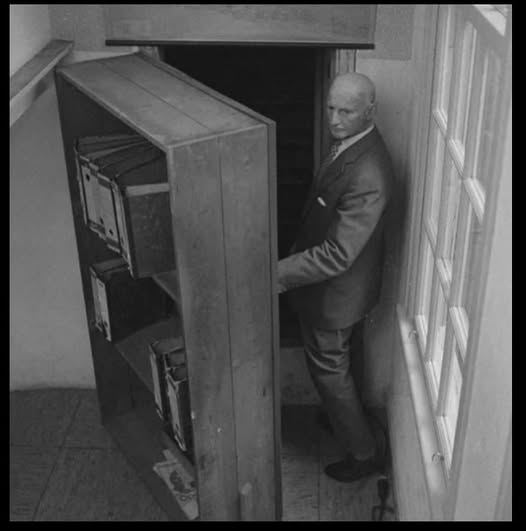In 1960, a moving moment took place in Amsterdam when Otto Frank, the only survivor of his immediate family, quietly returned to the attic where he, his wife Edith, and their daughters Anne and Margot had hidden for two intense years. The small, hidden space behind a bookcase at Prinsengracht 263 had once been a fragile sanctuary, a narrow retreat from the relentless Nazi persecution. Stepping through the doorway after more than fifteen years, Otto was flooded with memories—the whispered conversations, the fear, the brief moments of laughter, and the unbearable tension that had shaped life in the secret annex. For him, it was more than just returning to a place; it was facing the heavy personal and historical loss he carried.
The image of Otto Frank at that entrance shows a man standing between past and present, a witness to both survival and tragedy. He had endured Auschwitz and come back to a changed world, carrying the memory of his wife and daughters, all lost in the Holocaust. The visit was deeply private—a quiet pilgrimage to honor their lives and to remember the millions who were murdered. In that attic, the line between hiding and being found became a powerful symbol of resilience, courage in unimaginable circumstances, and humanity’s ability to remember and bear witness.
After this return, Otto dedicated himself to preserving Anne’s voice, overseeing the publication of her diary. Her words, filled with remarkable clarity and insight, transformed from a young girl’s private thoughts into one of the most lasting records of the human cost of Nazi persecution. Otto’s 1960 visit, captured in that simple, solemn image, reminds us that behind every statistic is a personal story, a family, a life forever changed by cruelty. His presence at the attic’s entrance stands as both an act of remembrance and a testament to the enduring strength of memory, survival, and the written word.
